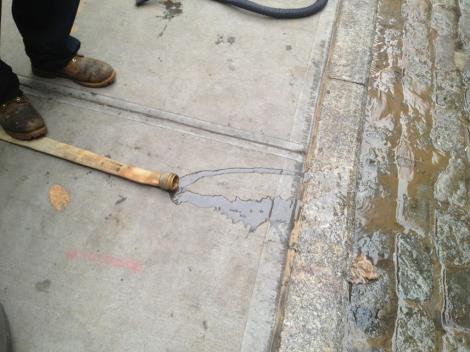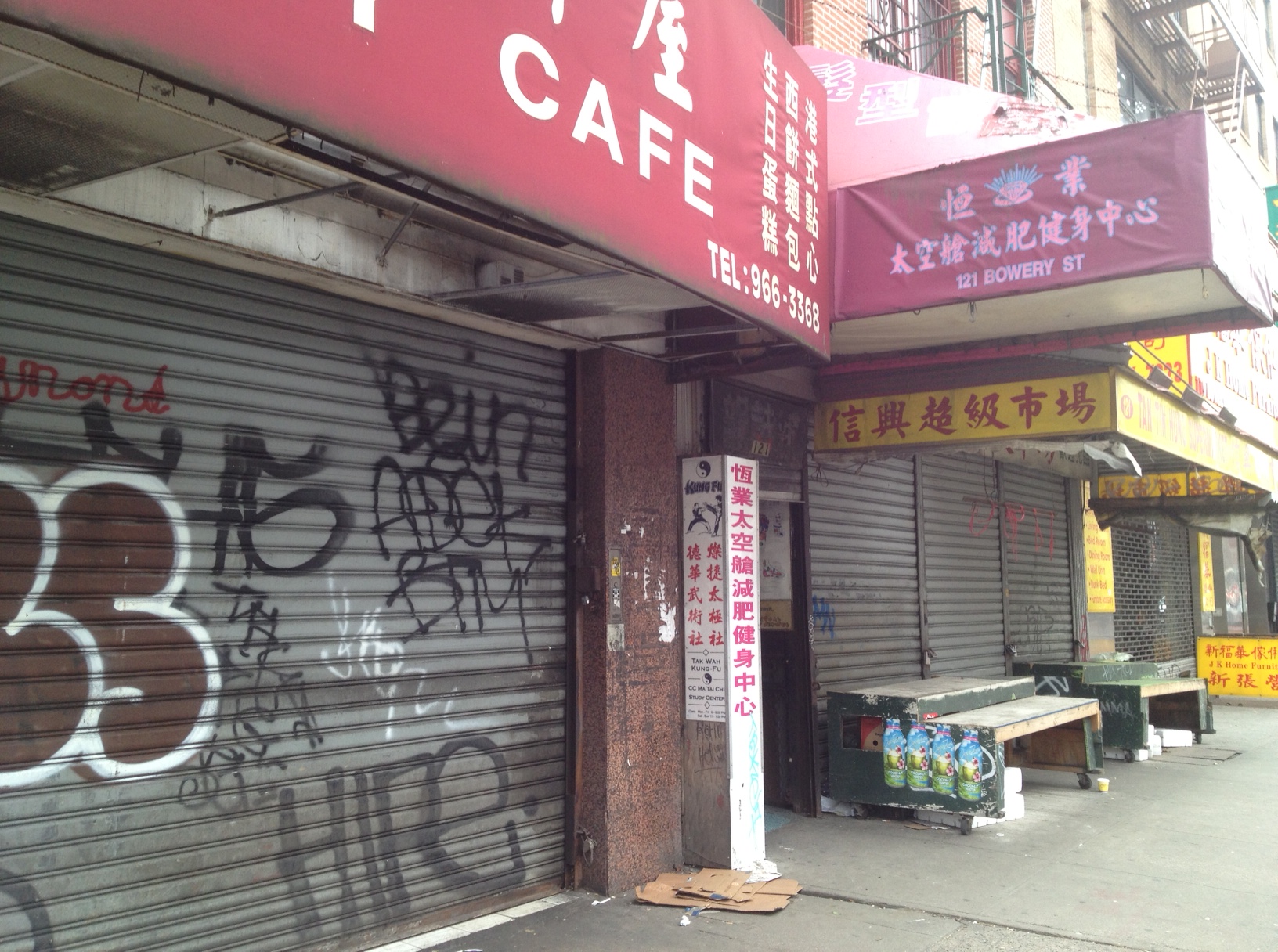
Manhattan’s trademark is its busyness, its height, its scale. Manhattan, apart from the city at large and apart from nearly everywhere else in the world, is a symbol of mania, a thicket of stacks of people working and living. Manhattan is a target center of information and culture that thrives on a million overlapping pulses that build and cancel like ripples. There is nowhere like it. Usually.
I used to live near Chinatown, just above downtown Manhattan at the island’s lower tip. Chinatown is mostly low buildings, three or four stories, meaning that its activity spills onto the streets. Vendors and hustlers and tourists crowd sidewalks, bargaining and buying and trying frustratedly to get by. Many of the residents of Chinatown are poor; our apartment just off Canal Street was directly above an apartment of the same size that housed four times as many people, in little cubbies carved up with hanging sheets. Chinatown is a particular reflection of the hecticness of Manhattan, its own flavor of urgency.
Today, when I walked through, three days after Sandy, it was quiet. Walking down the Bowery — a street whose poverty is so well-established as to give it a patina of hipness — I passed fewer and fewer people, and the people I passed were obviously poorer and poorer. At the lip of Chinatown, down where the Manhattan Bridge arrives from Brooklyn, there was almost no one. Just a few people crossing the street and, as at every corner, cops directing traffic in lieu of working stoplights. The usual streetside salespeople were mostly gone, the deep storefronts either gated or dark.
As I kept heading south, I finally came upon a long line of people standing behind a barricade. Aware of reports of long waits for transit, I naively asked one of the cops standing at the head of the line near a small bus if the people were waiting for a shuttle to Brooklyn. No, she replied. They’re waiting for food and water.
The problems caused by Sandy are myriad. Along the East River, the recreational parks are devastated: snapped trees, mud coating the handball courts. Near Union Square, Chipotle employees were throwing quickly spoiling juice into a garbage truck. On the Brooklyn side of the river, an art gallery next to a muddy street had staff in waders removing and drying off various things from a dank-smelling basement. But the worst problem was the people I didn’t see. I came upon only one crowd on one sidewalk in Chinatown, and it was people lined up to fill buckets with water and receive something to eat.

Floodwater trickles from a firehose in Brooklyn.
The area of lower Manhattan that saw the most flooding on Monday night contains two things in bulk: public housing and financial institutions. Both were displaced. But one group was displaced with full wallets and credit cards that could reserve $400-a-night hotel rooms. As I wandered near the river, I knew that the only obstacle between me and a warm apartment with working outlets was finding a cab. The people in that line didn’t have that magic pass. I’m in my apartment now, lights on. They’re in theirs, powerless. How could one not be affected by that? That I couldn’t walk my dog in a nearby park yesterday was an #uptownproblem compared to what’s happening south of 30th.
After seeing what happened to the city this week, New York Mayor Michael Bloomberg had one last tool he could employ today: a hurried, direct endorsement of Obama. You can’t know what Sandy did to the city — see it firsthand as Mayor Bloomberg did — and not understand the urgency. When blocks of the city are burned away or ripped apart or fall completely silent, there is no choice but to push hard and urgently to restore and rebuild and repair — and to try to prevent it from happening again. Bloomberg’s motivation in the endorsement was less climate than risk assessment. Was Sandy worsened by climate change? Academic question, unuseful. Can we stem damage from storms similar to Sandy in the future? Bloomberg thinks: maybe. And if there’s even a chance, it’s incumbent upon us to do whatever we can, urgently.
Manhattan, home to a million-and-a-half people, is centuries of pushing and struggle and building and triumph. Right now, as I write, a third of it is dark and cold and frustrated. It’s quiet. It’s not New York.
No mayor wants to see happen to the residents of his city what Michael Bloomberg saw happen. No resident wants to see it either.



